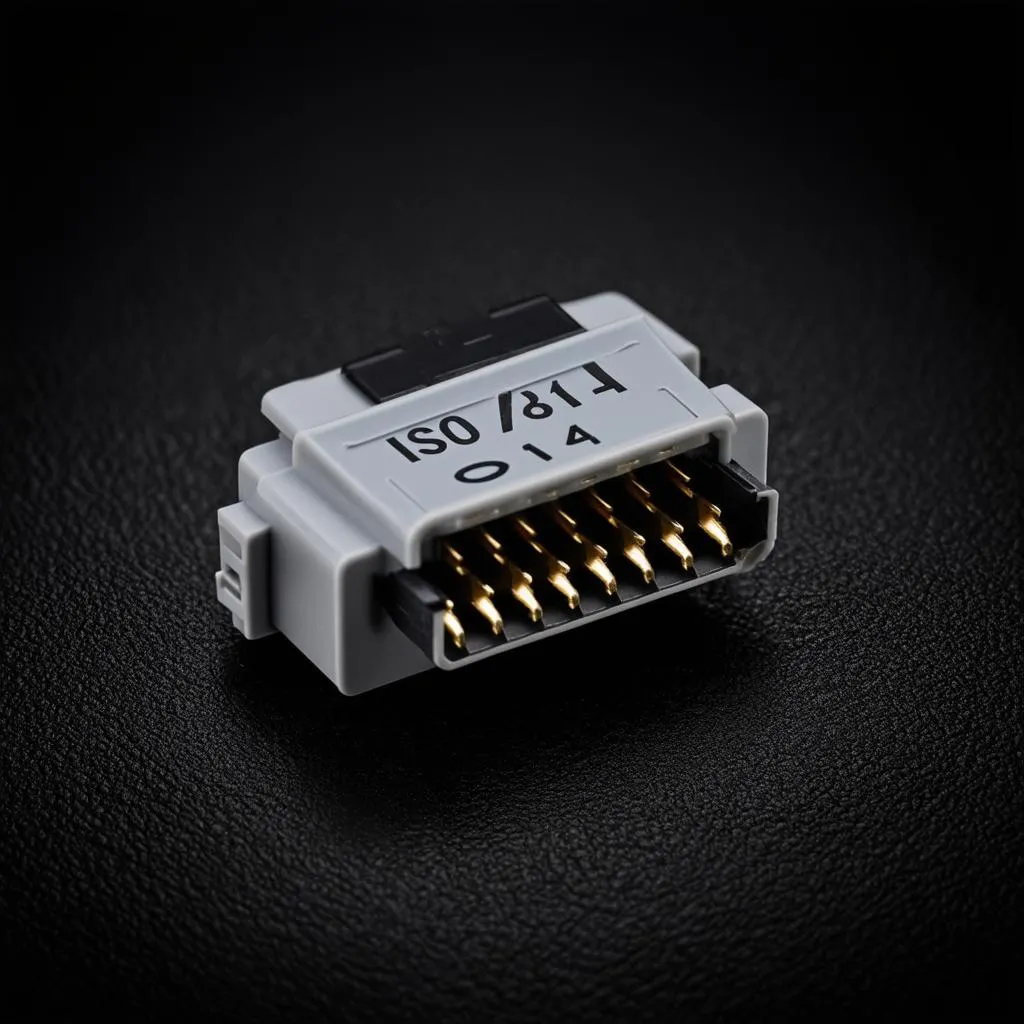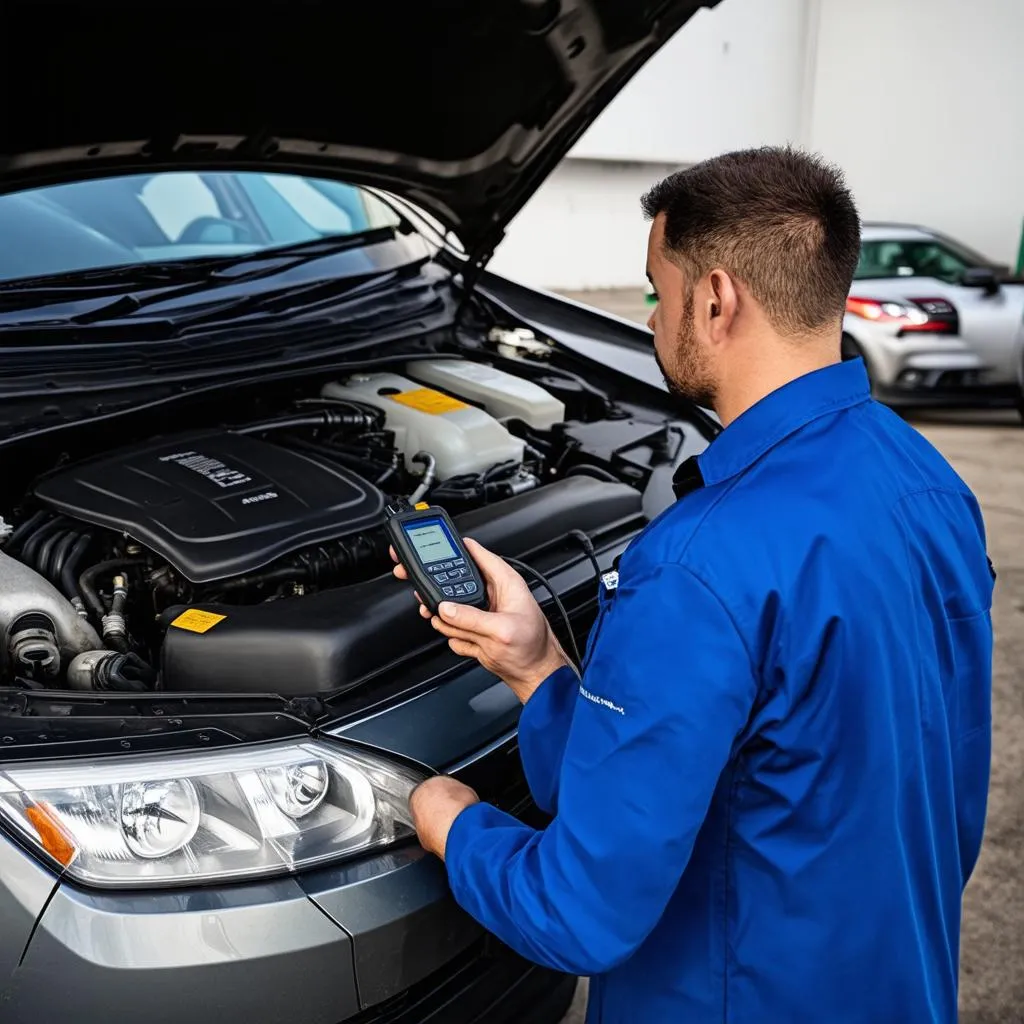Imagine this: You’re cruising down the Pacific Coast Highway in your sleek German sedan, wind in your hair, sun on your face. Suddenly, the “check engine” light throws a wrench into your idyllic drive. Panic sets in. What does it mean? Is your car about to sputter and die? Before you envision yourself stranded by the roadside, let’s take a deep dive into the world of ISO 9141 OBD and how it unlocks the secrets of your European car’s soul.
What is ISO 9141 OBD and Why Should I Care?
In a nutshell, ISO 9141 OBD is a communication protocol, like a secret language, used by your European car to talk to diagnostic tools. Think of it as the Rosetta Stone for your car’s inner workings. “OBD” stands for On-Board Diagnostics, a system built into your car to monitor emissions, engine performance, and other vital components. “ISO 9141” refers to the specific standard used primarily in older European vehicles, especially those manufactured before the year 2000.
Decoding the Jargon: A Deeper Look at ISO 9141 OBD
Technical Jargon Made Easy
ISO 9141 OBD relies on a single-wire, unidirectional communication system. It’s a bit like a one-way street where your car sends out diagnostic data, and the scanner receives and translates it. This standard utilizes the K-line for communication, which is a specific wire within your car’s OBD-II connector.
The Importance of ISO 9141 OBD for European Car Owners
Why is this important for you? Well, understanding ISO 9141 OBD empowers you to:
- Diagnose Engine Problems: By connecting a compatible scanner, you can read the diagnostic trouble codes (DTCs) stored in your car’s computer, revealing potential issues like faulty sensors, ignition problems, or emission control malfunctions.
- Reset Warning Lights: Once you’ve addressed the underlying issue, you can use an ISO 9141 OBD scanner to clear those pesky warning lights on your dashboard.
- Gain Insight into Your Car’s Health: This communication protocol lets you access real-time data like engine RPM, coolant temperature, and oxygen sensor readings, providing valuable insights into your car’s overall health.
 OBD-II Connector
OBD-II Connector
Common Questions About ISO 9141 OBD
Q: How do I know if my car uses ISO 9141 OBD?
A: The easiest way is to check your owner’s manual. Alternatively, look for a sticker under the hood or on the driver’s side doorjamb. You can also consult online resources or contact your car’s manufacturer.
Q: Can I use any OBD-II scanner with my ISO 9141 OBD vehicle?
A: Not necessarily. While most modern scanners support multiple protocols, including ISO 9141, it’s crucial to double-check compatibility before purchasing.
Q: I’m experiencing [Specific Car Problem]. Could it be related to ISO 9141 OBD?
A: While ISO 9141 OBD itself is a communication protocol and not a source of problems, issues with the wiring, connector, or the car’s computer can disrupt communication and trigger warning lights.
Choosing the Right OBD Scanner for Your European Car
Finding the right diagnostic tool is like finding the right wrench for a tricky bolt – it makes all the difference. Here’s what to consider when choosing a scanner for your ISO 9141 OBD vehicle:
- Compatibility: Ensure the scanner explicitly states its compatibility with ISO 9141.
- Features: Basic scanners read and clear codes, while more advanced models offer live data streaming, graphing capabilities, and even component activation for more in-depth diagnostics.
- Ease of Use: Opt for a scanner with a user-friendly interface, clear instructions, and helpful resources for interpreting data.
 Mechanic Diagnosing Car
Mechanic Diagnosing Car
Beyond ISO 9141 OBD: The Future of Car Diagnostics
As technology advances, so too do car diagnostic systems. While ISO 9141 OBD has served its purpose well, newer standards like CAN (Controller Area Network) are becoming increasingly prevalent. However, understanding the legacy of ISO 9141 OBD remains crucial, especially for owners of classic and older European vehicles.
Need a Hand? We’re Here to Help!
Navigating the intricacies of car diagnostics can feel overwhelming, but remember, you don’t have to be a mechanic to understand the basics. If you’re facing any challenges with your European car’s diagnostics, don’t hesitate to reach out. Our team of automotive experts is available 24/7 to provide personalized support and guidance. Contact us via WhatsApp at +84767531508 for assistance with diagnostic tools, troubleshooting, and more.
Keep Your European Beauty Running Smoothly
Just as a well-tuned orchestra requires each instrument to be in harmony, your European car relies on a symphony of systems working seamlessly together. ISO 9141 OBD provides a valuable window into that symphony, allowing you to address issues proactively and keep your driving experience as smooth as a Mozart concerto.
Have any other burning questions about ISO 9141 OBD or European car diagnostics? Share your thoughts and queries in the comments below. Let’s keep the conversation rolling!